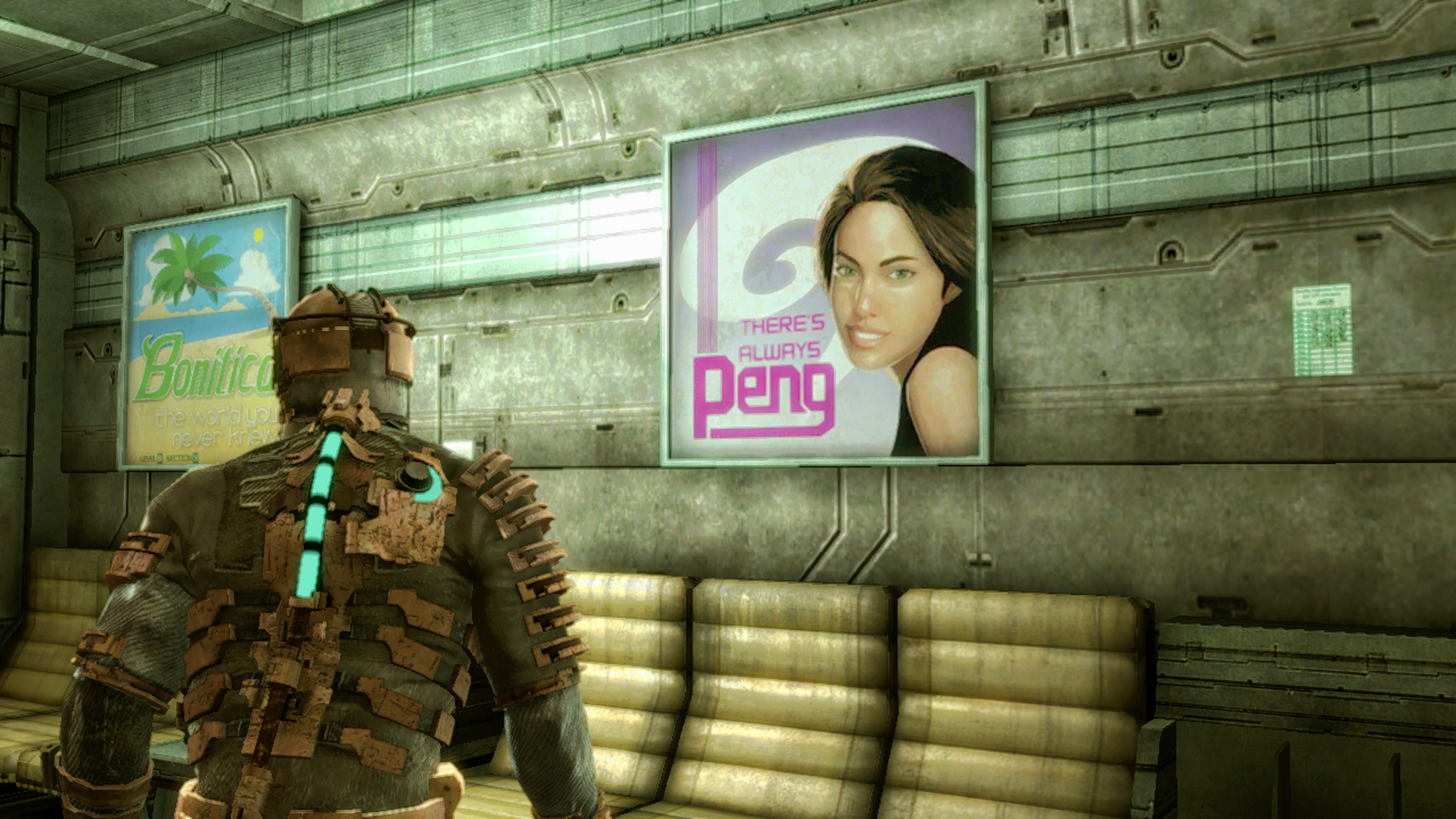I mean, yes, the hulking spaceship where Dead Space takes place isn’t exactly a floating Hilton once its crew have been turned inside out by a bunch of drooling flesh moths, but there is ample evidence that the Ishimura was a miserable place to live and work long before that happened. This is why the planet cracker class vessel is still remembered as fondly as other iconic spaces such as City 17, Rapture and the Spencer Mansion. Despite its fantastical contexts, the Ishimura is a believable location, one where the work itself is deemed more important than the workers who do it. When I first played Dead Space back in 2008, I became infatuated with the Ishimura. It felt lived in. Real. Every section of the ship justified its placement within the wider whole. Every room provided understandable context. Engineering sat by the engines, because of course it did. Suitcases were strewn around the arrival lounge. Medical was evenly divided between clinics that helped with ailments of both the mind and the body. And it helped that you, protagonist Isaac Clarke, were an engineer. Someone who understood the joints and brackets that held everything together. You, too, were a functional part of this larger machine. Revisiting the game this week in preparation for the upcoming remake, I was pleased to see my memories hadn’t fooled me. The Ishimura is still a magnificent feat of environment design, despite the posters for the mysterious “Peng” carrying different connotations than they did fifteen years ago. But this time around, I found myself particularly struck by the crew quarters. Rows upon rows of empty bunk beds, crammed together in tiny rooms in the dingiest corner of an already dingy ship. They are appalling. Atrocious. They are indicative of a society that cares little for its workers, and with an exasperated sigh, I realised that the Ishimura is even more believable than I remember. The people who designed it thought about the people who would live on it as an afterthought, and boy howdy ain’t that realism in its most unsubtle form. The Ishimura is a planet cracker. Its sole purpose is to punch into the surface of a planet to wrench out its shiny guts. Those on board then use a variety of tools - the same tools Isaac uses to sever flesh and bone - to separate the valuables from the rock. The inside of the ship, unsurprisingly, looks like a vessel that has cracked a lot of planets. It is suffocatingly bleak. Endless corridors of grim metal. Heavy doors to protect against the dangers of such a profession. A medical bay as large as the processing plant, presumably because limb severing was a problem way before everyone grew blades out of their hands and decided it would be fashionable to pop their small intestine on the wrong side of their tummies. You’d think, considering the rest of the Ihsimura resembles the inside of a washing machine (and, thanks to the large amount of machinery it contains, sounds like one too) that the crew quarters would offer its residents some kind of light respite in the form of carpets, or maybe a single plant. But no. Apart from the presence of endless rows of cramped bunk beds, they are indistinguishable from the rest of this godforsaken ship. The Concordance Extraction Corporation cares little for your comfort, and why should they? The Ishimura is a place of work, and just because you’re stuck there for months (years?) at a time matters little to those stuffing their pockets full of delicious planet rocks. “But what of the officers!” you cry. “Where does the Captain, his first mate, and his cook sleep?”. Well, that’s a good question. The reason we grow to know the Ishimura so intimately is that Dead Space ferries the player to every corner of its sprawling layout, and Isaac does indeed spend time exploring the officer’s quarters. They are brilliantly - laughably - average. Here we find the carpets the crew must crave. Each officer has their own private room. A double bed. Velvet sheets. A cabinet complete with hard liquor and photos of home. But here’s the thing: It doesn’t matter. The walls are the same claustrophobic metal as seen everywhere else on the ship. Your rank among your colleagues means little to the groaning bones of the Ishimura. Dress it up in crimson as much as you like. If you are aboard, you are worthless. Madness and decay are both an inevitability and a welcome conclusion. I hope, if anything, that the remake enhances this sense of suffocation. I want to see more evidence of the misery that existed regardless of mutated monsters. Of capitalism’s firm grip on the throat of comfort. The USG Ishimura is believable because it sucks. That’s precisely why I love it to this day.

